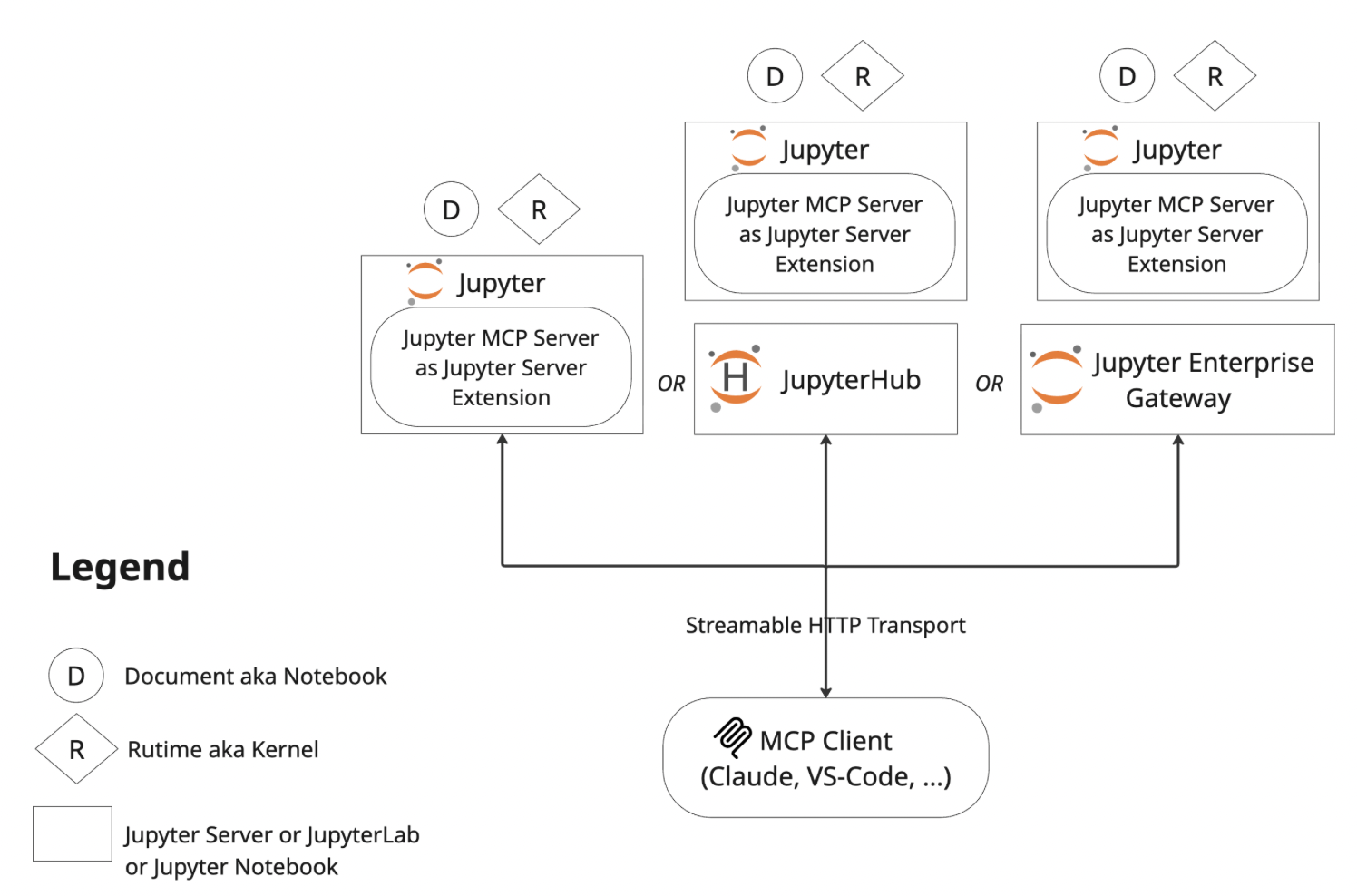Getting Started
Jupyter MCP Server can be started in various configurations depending on your needs. It can be running inside the Jupyter Server as a Jupyter Server Extension, or as a Standalone Server connecting to a local or remote Jupyter server or to Datalayer hosted Notebooks.
Navigate to the relevant section based on your needs:
- Jupyter Notebooks: If you want to interact with notebooks in JupyterLab/JupyterHub.
- Datalayer Notebooks: If you want to interact with notebooks hosted on Datalayer.
- STDIO Transport: If you want to set up the MCP Server using standard input/output (STDIO) transport.
- Streamable HTTP Transport: If you want to set up the MCP Server using Streamable HTTP transport.
- As a Standalone Server: If you want to set up the MCP Server as a Standalone Server.
- As a Jupyter Server Extension: If you want to set up the MCP Server as a Jupyter Server Extension. This has for advantage to avoid running 2 separate servers (Jupyter server + MCP server) but only supports Streamable HTTP transport.
You can find below diagrams illustrating the different configurations.
As a Standalone Server
The following diagram illustrates how Jupyter MCP Server connects to a Jupyter server or Datalayer and communicates with an MCP client.

As a Jupyter Server Extension
The following diagram illustrates how Jupyter MCP Server runs as an extension inside a Jupyter server and communicates with an MCP client. In this configuration, you don't need to run a separate MCP server. It will start automatically when you start your Jupyter server. Note that only Streamable HTTP transport is supported in this configuration.
